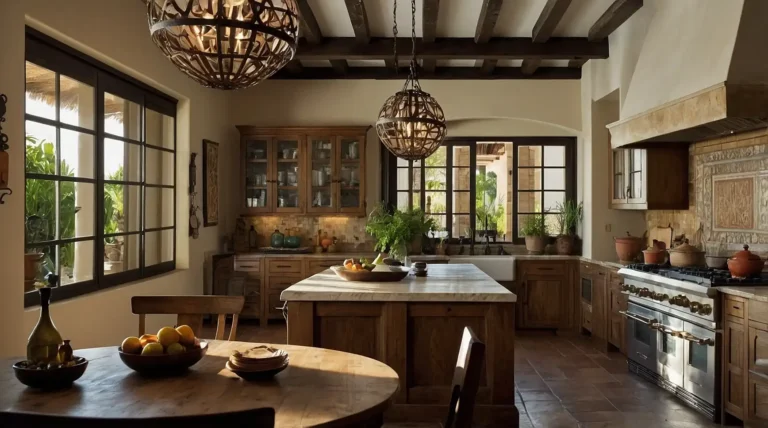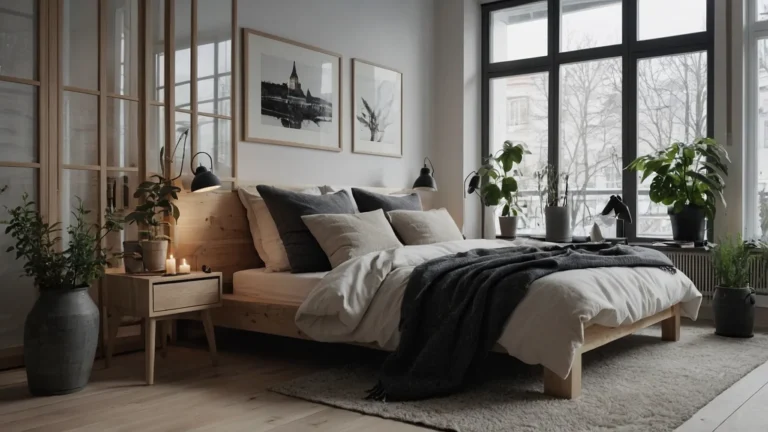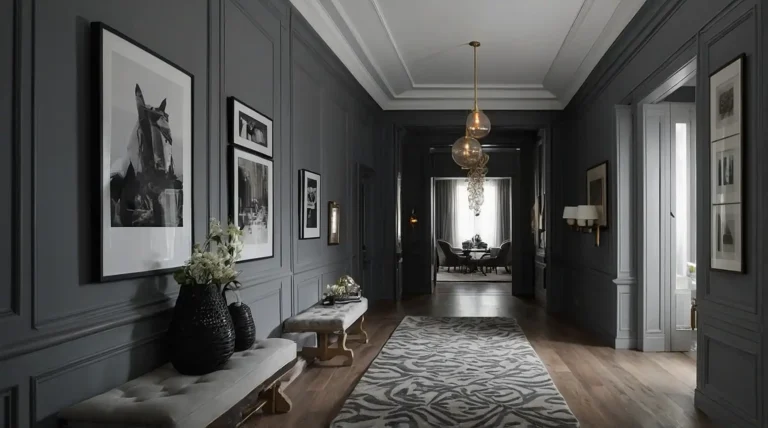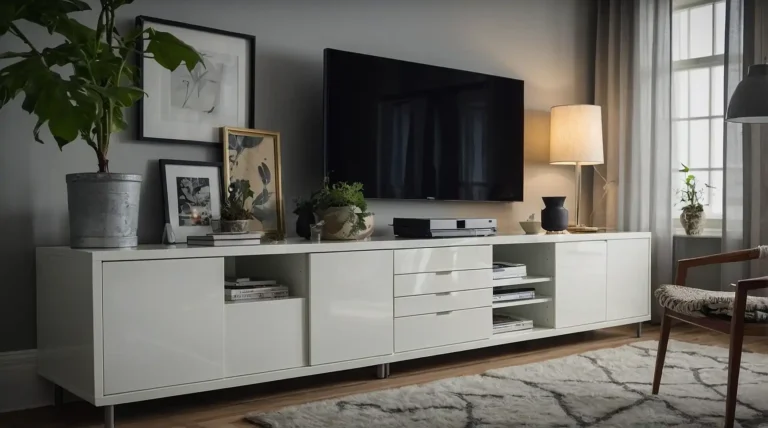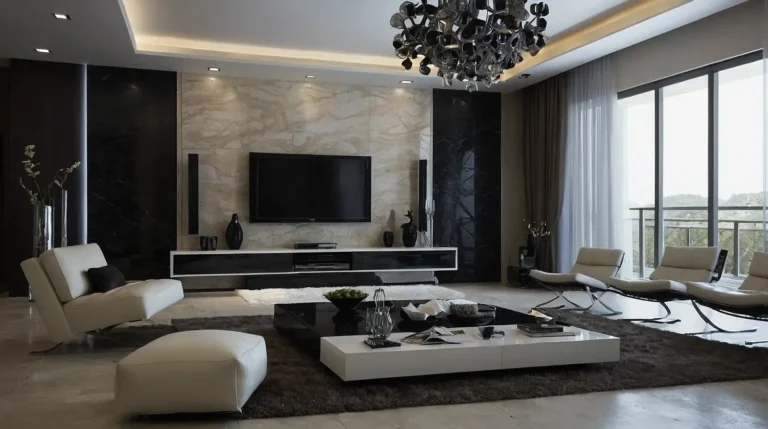27 Best Paint Colors for a Dark Room: Transform Your Space from Gloomy to Glowing
Dark rooms present a unique decorating challenge.
Whether you’re dealing with minimal windows, a north-facing exposure, or architectural limitations that block natural light, the right paint color can dramatically transform your space.
Contrary to popular belief, you don’t need to stick with pure white.
Many colors can reflect and maximize limited light while adding personality and warmth to darker spaces.
Ready to brighten your challenging room?
These expert-recommended paint colors will help your dark space feel lighter, larger, and more inviting without a major renovation.
1: Buttercream

This warm, luminous off-white reflects available light while creating a cozy atmosphere that pure white can’t achieve.
Buttercream brings subtle warmth without the yellowish tint that can make some creams look dated.
You’ll notice how this color glows rather than dulls in low light conditions.
It pairs beautifully with both cool and warm accent colors, giving you maximum decorating flexibility.
2: Pale Silvery Blue

This light, reflective blue adds subtle color while maximizing limited light.
Silvery blue creates the psychological impression of open skies, making your dark room feel more expansive.
You’ll appreciate how this color maintains its clarity even in low light conditions.
Choose a version with slight gray undertones rather than pure baby blue for a more sophisticated effect.
3: Soft Coral

This unexpected choice brings warmth and vitality to dark spaces that can otherwise feel cold and uninviting.
Coral creates a subtle glow effect, almost like built-in candlelight.
You’ll find this color particularly effective in rooms used primarily in evening hours.
The warm undertones create a flattering atmosphere that makes both people and furnishings look their best.
4: Light Warm Gray

This versatile neutral reflects available light while adding sophistication that pure white can’t deliver.
Warm gray creates subtle dimension without absorbing precious light in your dark space.
You’ll appreciate how this chameleon-like color adapts to different lighting conditions throughout the day.
Choose a version with beige rather than purple undertones for maximum warmth.
5: Butter Yellow

This cheerful hue mimics sunlight, bringing natural-looking brightness to dark spaces.
Yellow reflects available light beautifully while creating the illusion of sunshine even on gloomy days.
You’ll notice how this color instantly energizes dark rooms that might otherwise feel depressing.
Choose a soft, muted butter yellow rather than an intense primary shade for sophisticated warmth.
6: Pale Blush Pink

This subtle, warm neutral reflects light beautifully while adding unexpected sophistication.
Blush creates a flattering glow effect that makes both people and furnishings look their best.
You’ll find this color works particularly well in bedrooms, dining rooms, or other spaces where you want a flattering, intimate atmosphere.
Choose a heavily muted version with beige undertones for adult appeal.
7: Creamy Vanilla

This rich off-white reflects light while bringing cozy warmth that bright whites can’t achieve.
Vanilla creates a subtle luminosity that makes dark spaces feel instantly more welcoming.
You’ll appreciate how this versatile neutral complements virtually any accent color or wood tone.
It provides just enough warmth to prevent the cold, shadowy effect that can occur with pure white in dark rooms.
8: Soft Mint

This light, reflective green brings subtle energy while maximizing limited light. Mint creates a fresh, airy feeling in otherwise heavy-feeling dark spaces.
You’ll notice how this color maintains its clarity even in low light conditions.
Choose a version with gray undertones rather than bright, saturated mint for sophisticated dimension.
9: Pale Lavender

This unexpected choice brings subtle dimension to dark spaces while still reflecting available light.
Lavender creates a soft, diffused glow that feels simultaneously calming and uplifting.
You’ll find this color particularly effective in rooms where you want to create a relaxing atmosphere.
Choose a heavily muted version with gray undertones for sophisticated appeal.
10: Warm Alabaster

This luminous off-white reflects light beautifully while offering more depth than stark white.
Alabaster creates a subtle richness that transforms dark spaces without making them feel clinical.
You’ll appreciate how this versatile neutral complements virtually any accent color or wood tone.
It provides just enough warmth to make your dark room feel intentionally cozy rather than unfortunate.
11: Pale Aqua

This light blue-green hybrid reflects available light while adding subtle freshness to dark spaces.
Aqua creates the psychological impression of water and sky, making your room feel more open.
You’ll notice how this color maintains its clarity even in low light conditions.
Choose a version with gray undertones rather than bright, tropical aqua for sophisticated dimension.
12: Warm Ivory

This classic neutral reflects light while bringing subtle warmth that bright whites can’t achieve.
Ivory creates a rich luminosity that makes dark spaces feel instantly more luxurious.
You’ll appreciate how this versatile color complements both traditional and contemporary décor styles.
It provides just enough depth to prevent the stark, shadowy effect that can occur with pure white.
13: Soft Peach

This warm, subtle hue creates a perpetual sunset glow in dark spaces.
Peach reflects light beautifully while adding unexpected sophistication and warmth to challenging rooms.
You’ll find this color particularly effective in spaces with northern exposure that otherwise feel cold and unwelcoming.
Choose a muted version rather than a bright, saturated peach for contemporary appeal.
14: Light Greige

This perfect hybrid of gray and beige reflects available light while adding modern sophistication.
Greige creates subtle dimension without absorbing precious light in your dark space.
You’ll appreciate how this chameleon-like color adapts to different lighting conditions throughout the day.
Its warmth prevents the cold, shadowy effect that can make dark rooms feel uninviting.
15: Pale Celery Green

This light, nature-inspired neutral reflects available light while adding subtle freshness.
Celery creates dimension without absorbing precious light in your dark space.
You’ll notice how this color brings the psychological benefits of nature indoors, making your dark room feel more alive.
Choose a version with gray undertones rather than bright green for sophisticated appeal.
16: Warm Sand

This natural-inspired neutral reflects light while bringing cozy warmth to dark spaces.
Sand creates subtle texture and dimension without absorbing the limited light available.
You’ll appreciate how this versatile color complements both cool and warm accent colors.
It provides a connection to nature that can make otherwise challenging rooms feel intentionally designed.
17: Light Powder Blue

This classic, reflective hue maximizes available light while adding subtle sophistication.
Powder blue creates the psychological impression of open skies, making your dark room feel more expansive.
You’ll notice how this color maintains its serene quality even in low light conditions.
Choose a version with slight gray undertones rather than bright blue for contemporary appeal.
18: Soft Wheat

This warm, natural-inspired neutral reflects light beautifully while adding subtle richness.
Wheat creates dimension without absorbing precious light in your dark space.
You’ll appreciate how this versatile color complements both traditional and contemporary décor.
It provides just enough warmth to make your dark room feel intentionally cozy rather than unfortunately dim.
19: Pale Seafoam

This light green-blue hybrid reflects available light while adding subtle freshness.
Seafoam creates a spa-like atmosphere that can make even the darkest rooms feel more relaxing.
You’ll notice how this color maintains its clarity even in low light conditions.
Choose a version with gray undertones rather than bright seafoam for sophisticated dimension.
20: Warm Bisque

This rich off-white reflects light while bringing subtle depth that bright whites can’t achieve.
Bisque creates a soft luminosity that transforms dark spaces without making them feel clinical.
You’ll appreciate how this versatile neutral complements virtually any accent color or wood tone.
Its subtle warmth prevents the cold, shadowy effect that can make dark rooms feel unwelcoming.
21: Soft Apricot

This warm, subtle hue creates a perpetual sunrise glow in dark spaces. Apricot reflects light beautifully while adding unexpected energy to challenging rooms.
You’ll find this color particularly effective in spaces that feel cold and unwelcoming.
The warm orange undertones create a flattering atmosphere that makes both people and furnishings look their best.
22: Light Gray-Blue

This sophisticated hybrid reflects available light while adding subtle dimension.
Gray-blue creates a serene atmosphere that can make even the darkest rooms feel intentionally cozy.
You’ll appreciate how this chameleon-like color shifts throughout the day, creating visual interest.
Choose a version with warm rather than cool undertones for maximum versatility in dark spaces.
23: Pale Buttermilk

This warm, vintage-inspired off-white reflects light beautifully while adding character.
Buttermilk creates a subtle glow that makes dark spaces feel instantly more welcoming.
You’ll notice how this color brings a timeless quality that works in both traditional and contemporary spaces.
Its slight yellow undertone mimics sunlight, brightening even the gloomiest rooms.
24: Soft Lilac

This unexpected choice brings subtle dimension to dark spaces while still reflecting available light.
Lilac creates a diffused glow that feels simultaneously sophisticated and uplifting.
You’ll find this color particularly effective in rooms where you want to create a unique atmosphere.
Choose a heavily muted version with gray undertones for contemporary appeal.
25: Warm Muslin

This textile-inspired neutral reflects light while bringing subtle depth that bright whites can’t achieve.
Muslin creates a soft luminosity that transforms dark spaces with quiet sophistication.
You’ll appreciate how this versatile color complements both traditional and contemporary décor.
It provides just enough warmth to make your dark room feel intentionally cozy rather than unfortunately dim.
26: Pale Celadon

This light, historical green reflects available light while adding subtle character.
Celadon creates a serene atmosphere inspired by ancient pottery glazes, adding unexpected sophistication.
You’ll notice how this color brings a timeless quality that works in various design styles.
Choose a version with gray undertones rather than bright green for sophisticated dimension in dark spaces.
27: Soft Chamois

This natural-inspired neutral reflects light while bringing subtle warmth to dark spaces.
Chamois creates dimension without absorbing the limited light available in challenging rooms.
You’ll appreciate how this versatile color complements both cool and warm accent colors.
It provides a connection to nature that can make otherwise unfortunate spaces feel intentionally designed.
Conclusion
The right paint color transforms a dark room from problematic to perfect.
Choose light-reflecting shades with subtle warmth that maximize your available light while creating an intentionally cozy, sophisticated atmosphere you’ll love.


